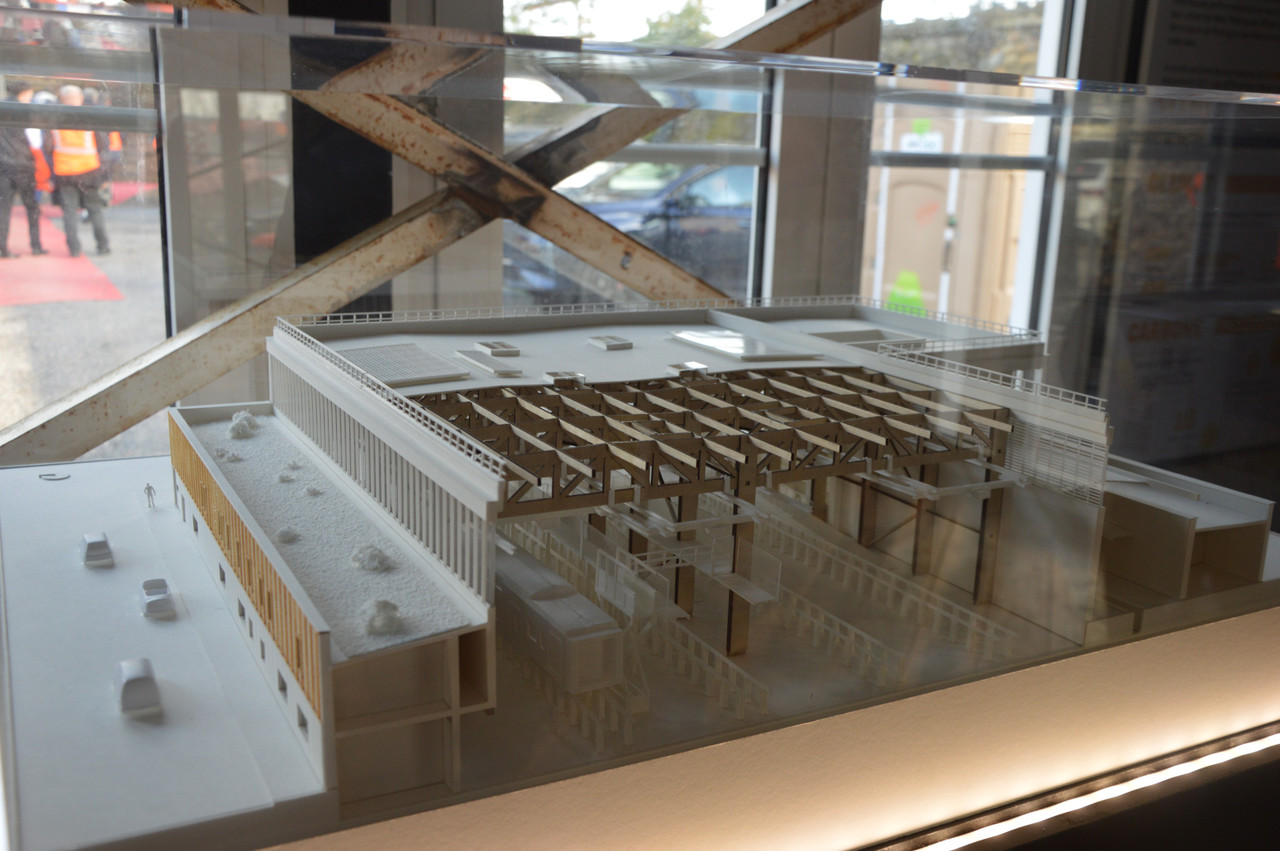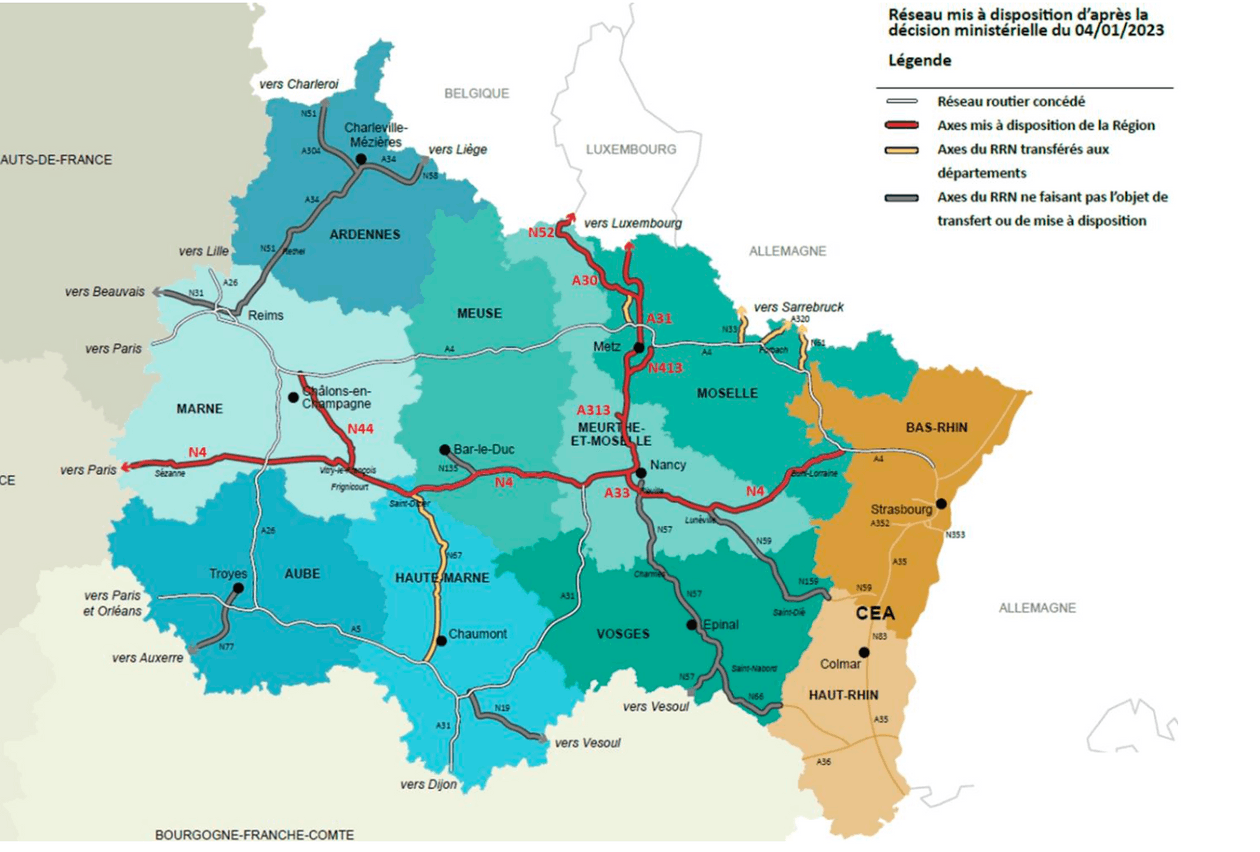On the roads, “tens of thousands of motorists are paying the price today for the botched A32 project.” And on the railways, “the network has hardly changed for 40 or 50 years.” A large number of elected representatives were in Montigny-les-Metz on Wednesday for the opening of the “Maison du Projet,” and some of them took a critical look at the policies pursued in the past. The prefect of Moselle, Laurent Touvet, was not entirely in agreement…
Be that as it may, the situation is clear: faced with an ever-increasing flow of cross-border workers, with 120,000 French workers crossing the border every day, and a 21% increase in passengers on Metz-Luxembourg trains, the slower development of infrastructure is causing the service to operate at just-in-time. The number of seats at peak times is still 9,000.

The number of passengers on the Nancy-Metz-Luxembourg line has risen considerably in five years. Image: Grand Est Region
Since 2018, under the Franco-Luxembourg memorandums of understanding, €460m has been invested, with funding split 50/50 between the two countries. “For us, there is a real urgency to move forward on concrete projects. Cooperation between our two countries is essential to improve the movement of French cross-border commuters, who are very important to our economy. One in four jobs in Luxembourg is held by a French cross-border commuter,” said mobility minister (DP), who had travelled to France to visit the maintenance centre at Montigny-les-Metz, where work has begun.
A landmark project for the Metz metropolitan area, it is also one of the key elements in the public authorities’ ambitions to improve cross-border mobility. It will be used to provide maintenance for the region’s trains, which will be stepped up, and should be operational by the end of 2026-beginning of 2027. Initially announced for 2024, the project has been delayed “due to the historic nature of the site,” explains the president of the Grand Est regional council.
Other projects are progressing a little more quickly, such as the recent P+R sites at Rodange, Belval, Longwy, Roussy-le-Village and Metzange. In , named Joseph-Bech, will open in the spring and be inaugurated in June. The platforms at Hettange-Grande, Uckange and Hagondange stations have already been lengthened to accommodate longer trains (which are not yet in service). Other projects are not yet included in the timetable but are being studied, such as the creation of a freight lock at the border, the widening of the A31 between Thionville and Luxembourg, the creation of a high service level bus between Esch and Audun-le-Tiche, the creation of a fast tram between the capital and Esch, the creation of a P+R at Dudelange and the removal of level crossings on the railway lines.
Here is a detailed timetable of projects to improve cross-border mobility.
2025
Because not all cross-border commuters come from metropolitan Metz or Thionville, the strategy of the two countries also aims to take into account other lines and offer new possibilities for mobility towards Luxembourg. The Longwy-Luxembourg link has been strengthened since December, with two additional return trips every day. Two return trips previously limited to Rodange have now been extended to Luxembourg City. This increase means that there are now 17 return trips per week on this route. The route of the RGTR 551 bus line between Thionville and Foetz via Audun and Belval has been optimised, with more frequent service at peak times.
In the spring, the region will be deploying a dozen “fluorescent bicycles” at a number of stations (Hettange, Thionville, Hagondange, Metz, Pagny-sur-Moselle, Pont-à-Mousson, Nancy, Toul, Longwy), with fares charged by the day or half-day. This new service is in line with the future metropolitan regional express service (Serm, service express régional métropolitain), which should not be seen as a mode of transport in its own right, but as a multimodal service for the whole region. “We are still waiting for financing solutions. The Serm trajectory has been adopted for the Metz-Luxembourg link,” confirmed Franck Leroy, president of the Grand Est Region. However, “Serm’s ambitions and a governance model still need to be defined.” France’s transport minister is expected to provide some answers in the spring.
At the end of the year, the public enquiry into the A31 bis project is due to be launched. “A year ago, the [French] transport minister approved the development plan for route F4, which includes a tunnel under Florange, and confirmed the decision to award a concession for the motorway from the Richemont triangle to the Luxembourg border. In 2024, we also held consultations to harmonise the town planning documents of the seven municipalities whose local town planning plans did not include any roads. The aim, following the public enquiry, will be to obtain a declaration of public interest at the end of 2026, after which the concessionaire will be chosen and will then award contracts to public works companies. The motorway will complement everything that is being done on the railway, which alone is not enough to allow the daily transit of all the cross-border commuters and also all the international transit,” explained the prefect of Moselle, Laurent Touvet.

Mobility minister Yuriko Backes (DP) spoke with the president of the Grand Est Region, Franck Leroy (centre) and the prefect of Moselle, Laurent Touvet, 29 January 2025. Photo: Maëlle Hamma/Maison Moderne
“As part of this multimodal vision, discussions are under way on the introduction of cross-border express road lines and high service level transport (HSLT) routes in the north of Lorraine. We are actively convinced that lines dedicated to carpooling and express coaches give more than convincing results. Examples from all over the world show this,” added Leroy.
On the road in Luxembourg, work continues on widening the A3. “This is a strategic project for the future of mobility in our cross-border region. The widening of the A3 between the Croix de Gasperich and the French border is really intended to give priority to public transport and car sharing,” said Backes.
Between the Croix de Gasperich and the Berchem area, the final work on installing the signalling gantries is scheduled for the end of this year. “We will be able to open the first strategic section very soon. We will give more details soon,” she added.
Work on widening and rehabilitating the Livange viaduct is scheduled for completion before this year’s summer holidays. Work on the construction of the retention basin at Bettembourg and the cycle and pedestrian bridge will start in September and May respectively. Work on widening the A3 at the Livange interchange is scheduled to start in September this year.
2026
When it comes to trains, by the end of 2026, the Grand Est Region plans to increase capacity to 13,500 seats from the current 9,000. To achieve this, it will have to increase the number of trainsets.
By the end of 2026, the first Normandy trains acquired by the region should be able to run, with a total capacity of 1,000 seats per train. These trains will be able to run in triple formation, which should make it possible to achieve the target set by the region and to offer 50% more seats by the end of this first phase.
But before that can happen, the construction of the new maintenance centre at Montigny-les-Metz needs to be completed and connected to the network. That’s a €105m project co-financed by the two countries. Work will also continue on extending the platforms.

Work on the Montigny-les-Metz maintenance centre should be completed by the end of 2026. Photo: Maëlle Hamma/Maison Moderne
It will also be necessary to refurbish the existing trains, of which there are 41 today. “This is more than just ordinary maintenance, it’s a real refurbishment and modernisation, including comfort features for users. The aim is to restore this rolling stock to its full operating potential for the next 15-20 years,” said Leroy. Renovation and maintenance work has already begun, with a total cost of €178m.
2027
“The new Luxembourg-Bettembourg line was , but we are bringing forward the entry into service to mid-2027,” Backes was delighted to announce. This development will also involve modernising and adapting Bettembourg station (scheduled for 2029), which will be the subject of a funding bill tabled in the course of 2025. “It will be rebuilt, with new platforms with canopies, new underground passages with lifts, new footbridges also with lifts, one of which is already in service, a new track plan to resolve the difficulties caused by trains crossing, and a new bus station with more capacity for buses and protection against bad weather. The new Bettembourg station will eventually become the second most important rail interchange in Luxembourg, and will also incorporate accessibility for cyclists,” said Luxembourg’s mobility minister.
On the road, on the French side, the region, which took over management of the A31 on 1 January, plans to introduce an eco-tax for heavy goods vehicles over 3.5 tonnes. “Between Luxembourg, on both the Longwy and Thionville sides, towards Nancy, the aim is to undertake a major modernisation plan. Our aim is to move from a dual two-lane carriageway to a dual three-lane carriageway, financed by an eco-charge. This will involve taxing transit traffic so that we can have an infrastructure with greater capacity and greater safety, without increasing the burden on the taxpayer,” said the president of the region.

The region plans to introduce a charge for heavy goods vehicles to finance new projects on the routes it now manages. Image: Grand Est Region
2030
By 2030, train capacity at peak times should have increased to 22,500 seats. Is this too long a timescale for cross-border commuters? Undoubtedly, “but we can’t stop trains running, which would inevitably extend the duration of the works. We have technical constraints in terms of safety and signalling. The objective for 2030 is to have a train between Thionville and Luxembourg every 7 or 7.5 minutes, bearing in mind that TGVs and freight trains will pass between these TER trains,” Leroy explained in detail.
The year 2030 should also mark the end of the titanic work to make the A3 2x3 lanes on the Luxembourg side, between the Croix de Gasperich and the border.
On the French side, 2030 should also mark thestart of work on the A31 bis for at least five years.
Other projects under study
The region and the Luxembourg ministry are working on the creation of multimodal interchange hubs, as part of the metropolitan regional express service. Projects are currently being analysed at Hettange-Grande, where the existing car park will be extended, with the creation of a silo car park. The south car park could be redeveloped as a multimodal hub.
At Uckange, a project to develop parking capacity is also underway.
At Hagondange, 100 parking spaces could be created to complement a multimodal interchange on rue de Boussange.
This article was originally published in .
